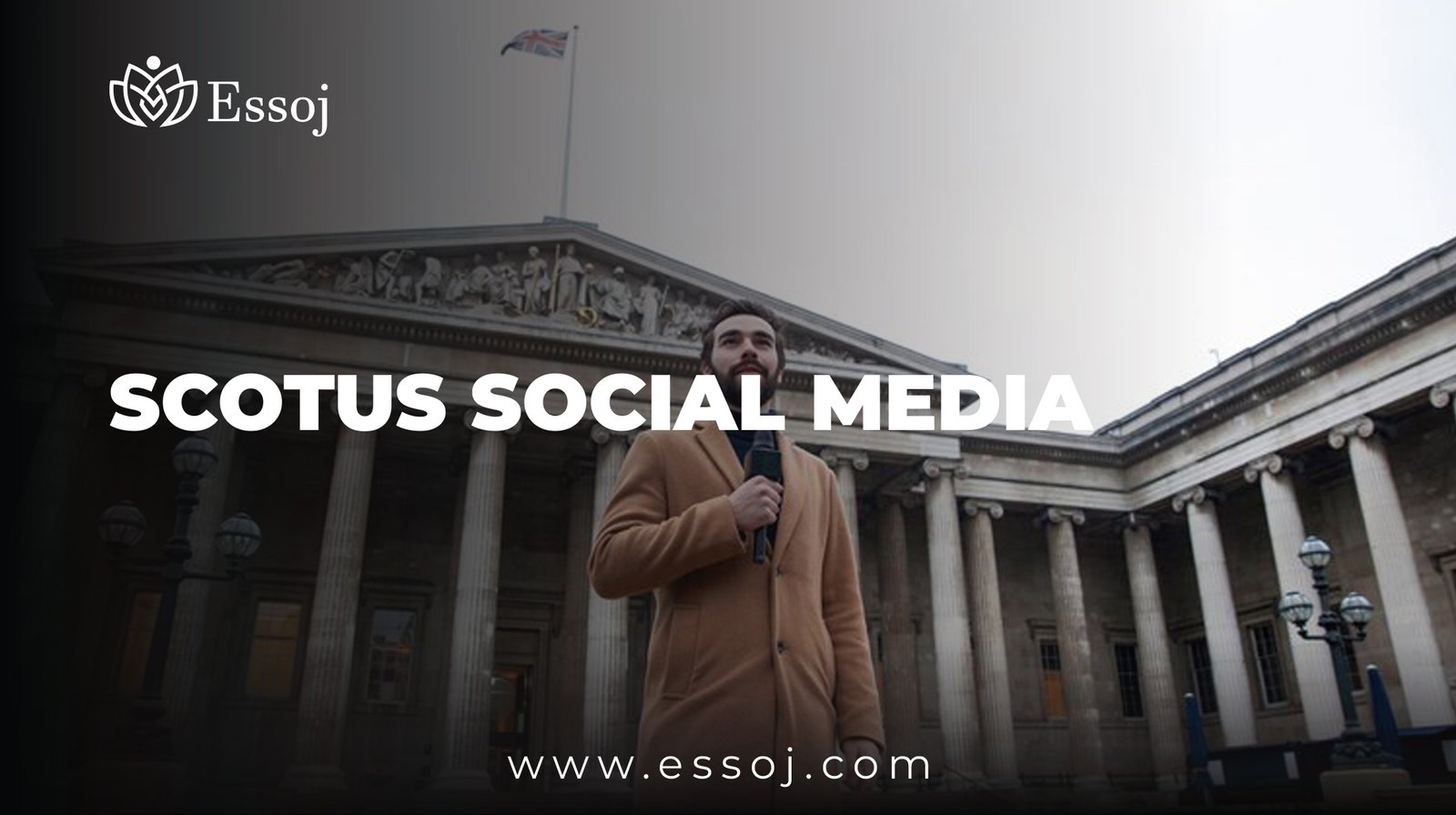SCOTUS Social Media: Understanding the Impact of the Supreme Court Online
Social media is everywhere today. Whether it’s keeping up with friends on Facebook, sharing photos on Instagram, or reading news on Twitter, social media has become a big part of how we communicate and learn about the world. But there’s one area where social media is becoming increasingly important—and that’s in the world of law, especially when it comes to the Supreme Court of the United States, or SCOTUS.
In the past, information about SCOTUS rulings and legal decisions was something most people had to get from the news or legal experts. But now, thanks to social media, it’s easier than ever to stay informed, share opinions, and understand how the Supreme Court’s decisions impact our lives. This article explains how social media for the Supreme Court works, why it matters, and how it’s changing the way we think about legal decisions.
What is social media for the Supreme Court?
Let’s start with the basics. The Supreme Court of the United States, or SCOTUS, is the highest court in the country. It decides on important legal issues that affect everyone in the United States. Whether it’s about healthcare, voting rights, or civil liberties, SCOTUS decisions shape the laws that we live by.
Social media for the Supreme Court is simply the way SCOTUS decisions and legal cases are discussed and shared on social media platforms like Twitter, Facebook, and Instagram. In the past, information about the Supreme Court’s rulings was mostly available through traditional news outlets. But now, social media allows for quicker, more open communication, making it easier for people to access court decisions, follow ongoing cases, and engage in discussions about them.
Why Should You Care About Social Media for the Supreme Court?
You might be wondering why you should care about social media for the Supreme Court. After all, most people don’t follow every Supreme Court case. However, SCOTUS rulings can impact you in ways you might not even realize. Supreme Court decisions can affect everything from your rights as a citizen to the laws surrounding healthcare, education, and even environmental protection.
For example, decisions like Roe v. Wade (about abortion rights) or Obergefell v. Hodges (about same-sex marriage) shaped the way laws are applied across the country. With SCOTUS social media, you can stay updated on these important rulings without having to wait for lengthy news reports. Social media lets you learn about decisions quickly and even share your opinion with others.
How SCOTUS Social Media Works
Social media has made it much easier to stay informed about social media for Supreme Court decisions in real-time. Let’s take a look at how social media for the Supreme Court works and why it’s important:
1. Instant Updates
In the past, it could take hours or even days for a Supreme Court ruling to be widely known, especially if it was a major decision. But thanks to social media, Supreme Court decisions are now shared almost immediately after they are announced. Platforms like Twitter and Facebook allow for real-time updates, meaning anyone can learn about a ruling as soon as it’s made public.
For example, if SCOTUS decides on a controversial case, the official @SCOTUS Twitter account will usually post the decision quickly. Legal news organizations and reporters then follow up with their own analyses, explaining the ruling in simple terms. This fast-sharing allows people to react and discuss the decision almost immediately.
2. Breaking Down Complex Decisions
One challenge with Supreme Court decisions is that they can be difficult to understand, especially for those without a legal background. Legal jargon and long, detailed rulings can make it hard for regular people to grasp the impact of a case. Social media for the Supreme Court has helped solve this problem by allowing legal experts and journalists to break down complex decisions into more understandable language.
For example, after a ruling on a major case like Dobbs v. Jackson Women’s Health Organization, which overturned Roe v. Wade and impacted abortion rights, many legal experts used Twitter to share summaries of what the ruling meant and how it would affect the country. These simpler explanations made it easier for people to understand the case and its consequences.
3. Public Participation and Discussion
Another key element of social media for the Supreme Court is how it enables public discussion. After a major social media for the Supreme Court decision, social media platforms allow people to share their opinions and talk about how the ruling affects them. Hashtags like #SCOTUS, #RoeVWade, or #SupremeCourt often trend as people express their views on controversial cases.
People can use these platforms to join debates, learn from others, and see how their opinions fit into the wider national conversation. For example, after SCOTUS ruled on same-sex marriage in Obergefell v. Hodges, social media was flooded with celebration from supporters and protests from opponents, giving everyone a space to voice their thoughts and engage in a national conversation about marriage equality.
4. Increased Transparency and Accountability
Before social media, many people felt disconnected from the Supreme Court. Court decisions were often seen as distant and hard to follow. Social media has helped change this by making SCOTUS more accessible and transparent. Social media for the Supreme Court accounts, like the official @SCOTUS Twitter account, post updates about the court’s activities, including hearing dates, opinions, and important rulings.
This increased transparency allows the public to stay informed about the court’s actions and hold it more accountable. If a decision is controversial or upsetting, people can share their concerns on social media, and the court can be held accountable for the decisions it makes.
How to Stay Informed on Social Media for the Supreme Court
If you’re interested in following social media for the Supreme Court, here’s how you can stay informed:
1. Follow the Official SCOTUS Account
The official SCOTUS Twitter account (@SCOTUS) is one of the best places to get updates on the latest court decisions. You can follow this account to get instant news about rulings, hearing schedules, and other important court-related information.
2. Follow Legal Experts and Journalists
Legal experts, law professors, and reporters also share helpful information about social media for the Supreme Court. These experts often post summaries of SCOTUS rulings, explain the details in simpler terms, and discuss how the decisions will affect people.
3. Join the Conversation
Once a major social media for the Supreme Court decision is announced, social media platforms are full of conversations. You can join these discussions by following hashtags like #SCOTUS, #SupremeCourt, and #LegalNews. Joining the conversation lets you learn from others, share your own thoughts, and become more involved in important legal discussions.
4. Stay Updated on Legal Blogs and News Outlets
Many legal news outlets and bloggers share the latest news and updates on social media for Supreme Court cases through social media. Following these outlets gives you a deeper understanding of the cases that matter most.
Why Social Media for the Supreme Court is Important
In today’s world, social media for the Supreme Court is essential for several reasons:
- Access to Information: It helps everyone stay up to date on the latest Supreme Court decisions without waiting for lengthy news reports.
- Clear Explanations: It makes complex legal rulings easier to understand.
- Public Engagement: It allows everyone to share their opinions and engage in important conversations about the law.
- Increased Accountability: Social media makes the Supreme Court more accountable by allowing the public to voice concerns and ask questions.
Frequently Asked Questions About SCOTUS Social Media
- What is SCOTUS Social Media?
SCOTUS Social Media refers to the online presence and communication channels related to the U.S. Supreme Court (SCOTUS), including official accounts and coverage on social media platforms. - Does SCOTUS have official social media accounts?
The U.S. Supreme Court does not maintain personal social media accounts, but it shares official updates and information via its website and through other media outlets. - How does SCOTUS use social media?
SCOTUS uses social media indirectly by releasing important rulings, case summaries, and news through official channels, often communicated by press offices or legal organizations. - Can the public follow SCOTUS decisions on social media?
Yes, while SCOTUS does not directly engage on social media, legal news outlets, law organizations, and journalists frequently update the public on key rulings and developments.
Conclusion
SCOTUS Social media for the Supreme Court is changing the way we think about the law. It gives everyone, regardless of their background, the chance to stay informed, understand legal decisions, and participate in discussions about major rulings. With social media for the Supreme Court being more accessible through social media, it’s easier than ever to learn about the decisions that shape our country and engage in conversations that matter.
Whether you’re passionate about legal issues or just trying to keep up with the latest news, SCOTUS social media is a great way to stay informed and involved. So, if you haven’t already, consider following SCOTUS online—you’ll be better informed and able to join in on the important discussions happening around the Supreme Court!

